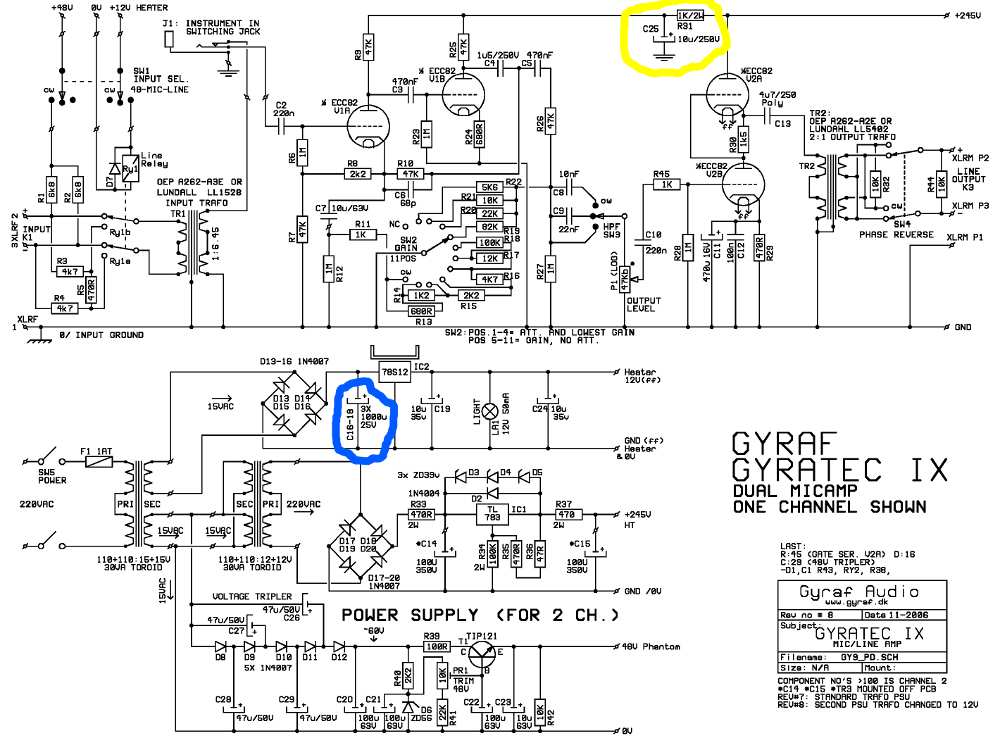- Toroids: minimum 30VA each. If you have 50VA, that's probably good.
- Capacitors: As you say, don't go for snake-oil. The sonic contributions of the G9 does NOT come from capacitative fancyness. You can always experiment later, but you imo won't gain 1% extra quality from putting in €1000 worth of capacitors.
- HT 245V: Don't spend money on fancyness - rather spend it on upgrading to two 330 or 470uF/400V electrolytics (not larger) - this may help quiten down the supply a bit.
And last, but not least - do the recommended trace-cut and direct-wireing mod for the front-panel Hi-Z jacks. Can save you a lot of troubleshooting later.
Take care when working on high voltages (!)
Jakob E.
- Capacitors: As you say, don't go for snake-oil. The sonic contributions of the G9 does NOT come from capacitative fancyness. You can always experiment later, but you imo won't gain 1% extra quality from putting in €1000 worth of capacitors.
- HT 245V: Don't spend money on fancyness - rather spend it on upgrading to two 330 or 470uF/400V electrolytics (not larger) - this may help quiten down the supply a bit.
And last, but not least - do the recommended trace-cut and direct-wireing mod for the front-panel Hi-Z jacks. Can save you a lot of troubleshooting later.
Take care when working on high voltages (!)
Jakob E.






































